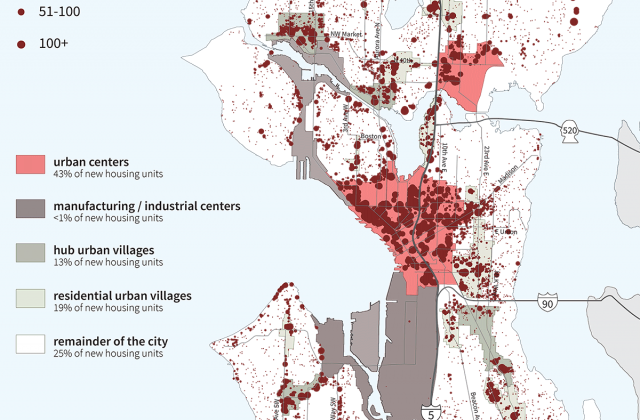Comp Planning: All of the Above!
Let me start by saying that regional planning and planning for future growth is a serious business and it isn’t easy. The City of Seattle is currently starting a long public process around where future growth–which really means more people–should go. They have three options:
Alternative 1: Urban Center Focus
Most growth would be encouraged in our urban centers: Northgate, University District, Downtown, Uptown, South Lake Union, and Capitol/First Hill.
- More households and jobs would go in these locations than over the past 20 years
- Most new households and jobs would be located in buildings 6 or more stories tall
- Would help advance the regional growth strategy
Alternative 2: Urban Village Focus
More growth would be encouraged in urban villages, such as Columbia City, Lake City, Crown Hill, Morgan Junction, Fremont, and Eastlake.
- Closest to how household growth has been over past 20 years, but more jobs would go to villages
- Many new households and jobs would be in mixed-use buildings and apartments about 4-6 stories tall
- Would help strengthen neighborhood business districts
Alternative 3: Transit Focus
Growth would be encouraged around our existing and planned light rail stations in the Rainier Valley, Capitol Hill, the University District, Roosevelt, and Northgate.
- New urban villages would be located around the I-90 and NE 130th Street stations
- Some village boundaries around light rail stations would expand
- Taller buildings would accommodate households and jobs in urban centers while smaller buildings would be in other locations
- Would take advantage of regional transit investments
Smart Growth Seattle’s response is, yes. All of the above please!
I know that sounds flippant, but I’ve seen lots of Comprehensive Planning process come and go. Keep in mind that, for the most part, Seattle’s Comprehensive Plan is aspirational. There are aspects and elements that get tied to zoning and land use decisions. But mostly, the language in the plan is attenuated with words like “the City will strive to achieve” the goals of the plan.
And as I’ve pointed out in another post, neighborhood groups will pick and choose what to hold the City accountable for down the road. If we choose Alternative 3, the TOD option, that will be the excuse to oppose new development and housing everywhere else. All of us who participated in the choosing of that option will be called out for not following the Comprehensive Plan of the City.
Whether it is growth targets or the buildable lands report, opponents of growth will pick and choose whatever is convenient to intimidate the City Council into believing that we’ve somehow gone too far, grown too fast, and allowed too much building. And as Publicola has pointed out, most of the people from neighborhoods getting involved are simply opposed to growth in the first place. We would just as soon have the jobs and people go someplace else, they say.
So go to the meetings and get involved! Let the City know what you think about where growth should go. But we need less planning and more spontaneity in Seattle and fewer rules; and that goes for land use, and transportation. Innovation isn’t planned, it just happens. What can be planned is space and encouragement for people to take risks and try new things. That’s why I say our position is “all of the above.”


